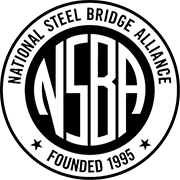National Steel Bridge Alliance
14 Reasons to Use Structural Steel For Bridges
Many factors set steel apart from every other structural material on the market--and AISC has assembled new resources that provide insight into some of them!
Click "Find Out More" to download PDFs with more information about the advantages of using structural steel for bridges.
Resilience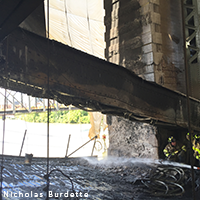
100-year steel bridges have been built for over 100 years. Many notable, historic, and revered bridges have been built with steel: Golden Gate Bridge, Eads Bridge, and the Brooklyn Bridge to name a few. With appropriate maintenance, these 100-year bridges have proven their resiliency to harsh environmental conditions and extreme events. Steel bridges of today are built with steel materials, coatings, and fabrication techniques that have the potential to be even more resilient than bridges built 100 years ago. |
Accelerated Construction Schedule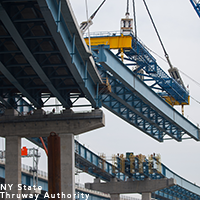
Fabricated off-site with geometrically controlled equipment, structural steel has the advantage of being ready to erect as soon as it reaches the bridge site. Reinforcement and formwork installation is not required. Structural steel erection is not limited to a specific temperature range. Structural steel is often lighter than other materials for the same span, resulting in smaller or fewer erection cranes. The use of structural steel for a bridge project accelerates construction and reduces on-site labor requirements and overall project costs. |
Unmatched Span-to-Depth Ratio
The recommended minimum depth for a continuous steel girder is 33% shallower than the recommendation for precast concrete. Combine these shallower girders with the fact that steel can span crossings well over 500 feet, and you have enormous benefits--in the form of lower initial construction costs now and lower maintenance and inspection costs in the future.
|
Reliability and Redundancy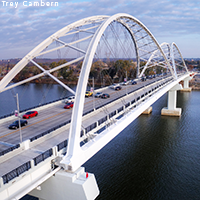
Steel bridges achieve reliability through redundant design and construction practices. Effective and efficient redundancy can be achieved through system or member-level mechanisms using engineered damage tolerances that can be coupled with the inspection interval of the bridge. Additionally, exposed tension elements of in-service steel bridges improve the probability of damage detection during routine visual inspections, further increasing safety and reliability. |
Lightweight Superstructure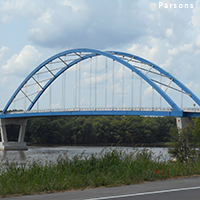
Superstructures for steel bridges are generally lighter than other building materials which typically result in smaller and less costly foundations. Also, lighter superstructures typically result in reduced seismic forces which can be a major advantage in high seismic regions. |
Future Modification and Adaptability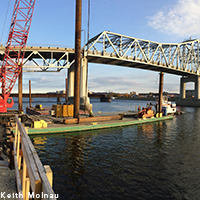
Structural steel bridge components can be strengthened and adapted if the need arises in the future to address increased live loadings, new live loadings, roadway widenings, or other changes in configuration. Other materials do not have the same adaptability and oftentimes require replacement for new loadings or changes in configuration. |
Railroad and Transit Applications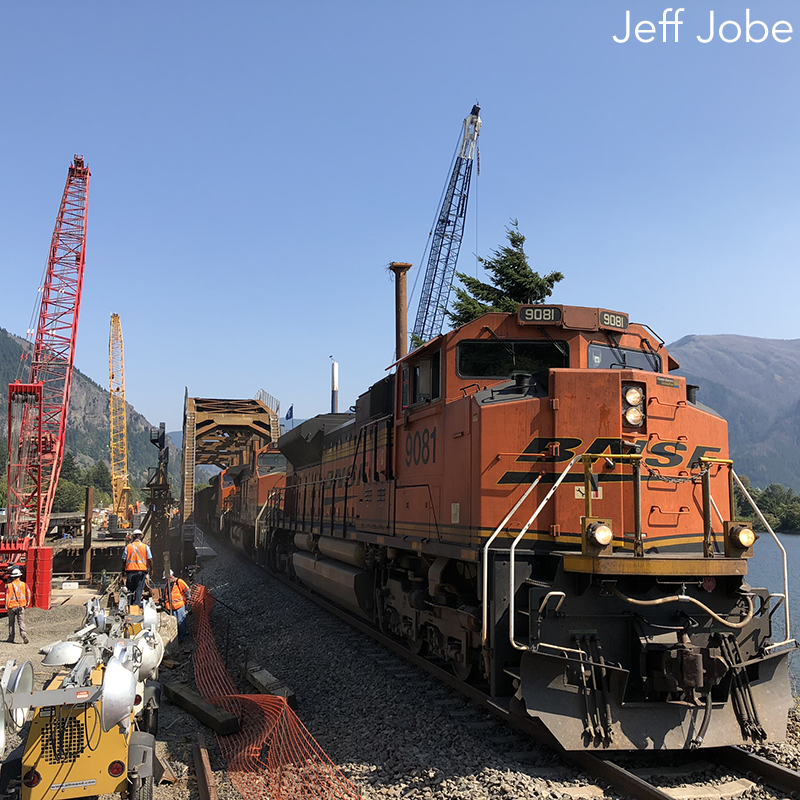
Steel bridges are well suited for railroad and transit applications due to the high strength and stiffness that steel can provide as deck girder, through-girder, or truss type bridges. Steel's high strength to weight ratio is ideal for supporting rail live loads which are nearly five times as heavy as traditional highway live loads. The stiffness characteristics provided by steel bridges can be exploited to meet the more stringent live load deflection and operational requirements of rail and transit loading. |
Inspectability & Repairability
Steel bridges can be visually inspected, as all major load-carrying components are easily accessible by bridge inspectors to efficiently evaluate their in-service condition. Main-load carrying components are not hidden from the bridge inspector's eyes, and typically do not require costly specialized equipment or non-destructive testing methods to determine their condition. Bridge inspectors are able to touch the main load-carrying components and obtain physical measurements of any possible deterioration, providing evaluators the data necessary to appropriately load rate the structure. |
Simple & Complex Geometries
Steel girders and other bridge components can meet the challenges for numerous complex geometrical configurations, from the simple to the complex. Steel bridges have the advantage of being able to handle tight curves, large skews, variable width decks, single-point urban interchanges, as well as entrance and exit ramp bifurcations that are a necessity within limited owner right-of-way spaces. |
Reduced Waste and Pollution
On average, structural steel produced in the U.S. contains at least 93% recycled content, and 100% of a structural steel frame can be recycled into new steel products. Steel's high strength-to-weight ratio coupled with a low carbon footprint-1.16 tons of CO2 per ton of fabricated hot-rolled steel-results in an overall reduction of the embodied carbon of a typical structure compared to other framing materials. Simply stated, waste and environmental impacts are minimized when steel is used. |
Maintainability and Repairability
When necessary, steel bridges can be efficiently repaired and remain in service, and not require complete replacement. Components can be strengthened with additional steel, or components can be removed and replaced without removing the bridge permanently from service. Impacts and damage from over height vehicles below the bridge are often easily corrected with well-documented heat-straightening techniques. Maintenance, repairs, and rehabilitation of a steel bridge can often occur with all or a portion of traffic maintained on the structure, while extending the in-service usefulness of the existing bridge. |
Workhorse Bridges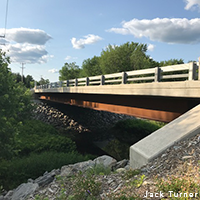
Steel bridges offer owners opportunities in the short span, typical overpass, workhorse bridge market as well. Steel bridges can provide a cost-effective solution for short spans, utilizing standard rolled sections or standard plate girders, as well as modern coating systems. When a quick replacement is necessary for a shorter span, steel offers the ability to be modular in construction, and rolled sections can be made readily available. |
Quality and Predictability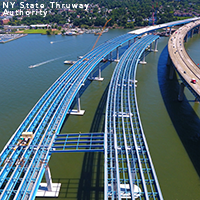
Off-site fabrication allows for controlled conditions, ensuring a higher quality product configured to precise tolerances. While all bridges experience some type of movement, a structural steel bridge behaves in a predictable manner to provide comfort to the traveling public.
|
Long-Lasting and Durable
Stiffness, strength in both tension and compression, and the ability to bend without cracking or breaking are inherent advantages of structural steel. Compared to all other materials, structural steel has the greatest ability to maintain strength and integrity during extreme events. Steel bridges are not subject to shrinkage or creep under load over time. Even in corrosive environments, applied coatings protect structural steel and add longevity to the bridge. A durable and nonporous material, steel provides value and a significant return on investment. |
